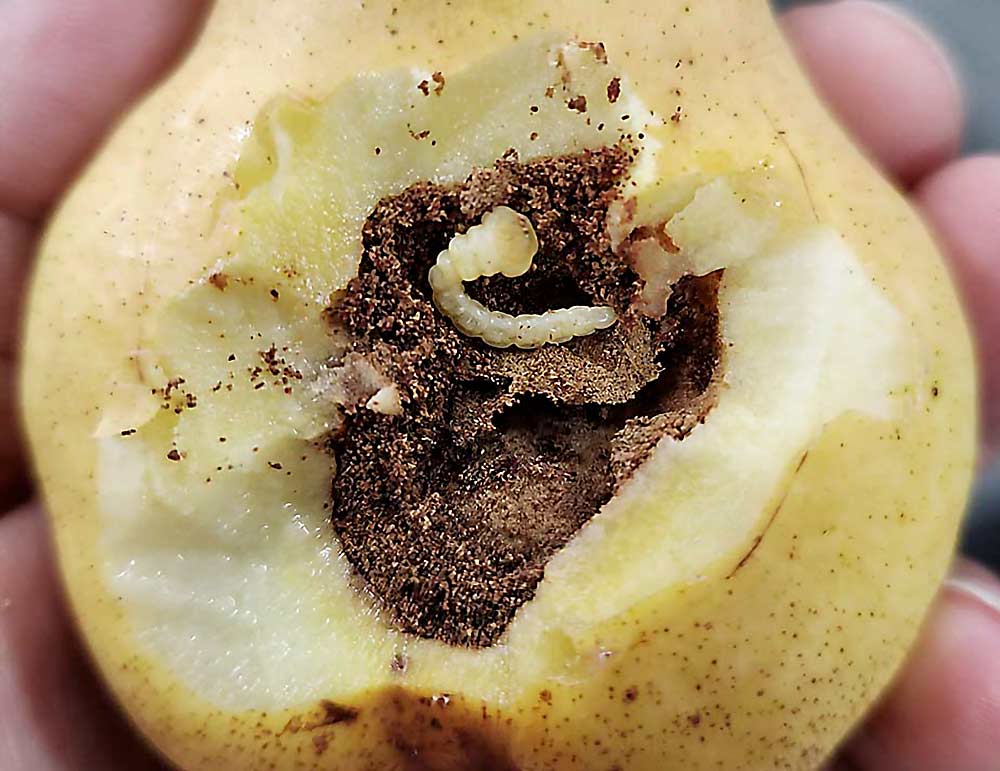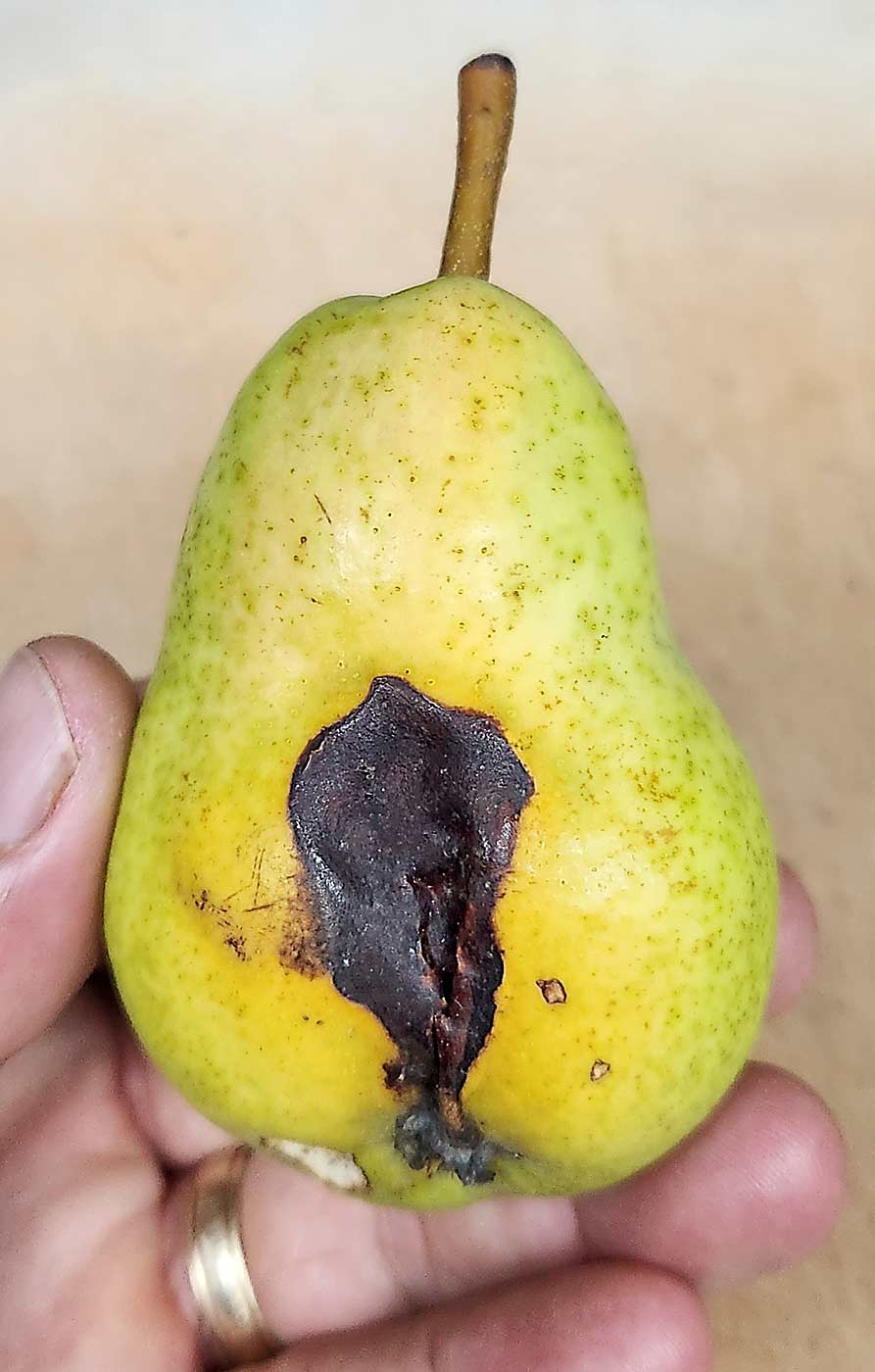
West Coast entomologists are asking pear growers to be on the lookout for pest damage that may be caused by confused Pacific flatheaded borers.
Specialists in California have found a borer pest attacking pear fruit directly, causing symptoms that look somewhat like sunburn or codling moth damage.
The strange part? Flatheaded borers, a family of beetles often found in the North American West, are only known to attack trees, often girdling trunks or branches.
“Right now, we don’t know exactly what we’re dealing with,” said Cindy Kron, North Coast IPM advisor for University of California Agriculture and Natural Resources.
Initial DNA testing suggests it may be the Pacific flatheaded borer, native to North America, but researchers are waiting for more conclusive identification.
The problem first surfaced in August last year in Lake County, north of the San Francisco Bay, when pest control advisor Broc Zoller noticed dark spots on the sunny side of pears and small entry holes near the calyx. He cut into one and found an off-white, slender grub, the front part of which was broad and flat, giving the critter its name. A California Department of Food and Agriculture entomologist identified it as a flatheaded borer but not as a particular species.
Zoller found the borers in four orchards, all organic or with low pesticide use. He has seen flatheaded borers on orchard tree trunks and branches, but rarely often enough to matter.
“It’s not something we really worry about,” he said.
Zoller worked with Kron and Clebson Gonçalves, a diversified crop advisor for Lake and Mendocino counties, to issue alerts and conduct grower meetings.

There may have been more undiagnosed impact — written off as codling moth damage — in North Coast orchards, Kron said. With harvest in full swing, the researchers had no chance for systemized sampling.
Meanwhile, Gonçalves sent specimens to the University of Tennessee, where researchers found their DNA consistent with the Pacific flatheaded borer in the genomic database. However, that’s not foolproof, Kron said. Someone could have made a mistake back in the day with previous DNA samples.
Over the winter, Kron reared some larvae in her lab. As of Good Fruit Grower’s press deadline in early March, only one larva had pupated, but no adults had emerged. When they do, researchers likely will be able to identify the pest more specifically.
Another head-scratcher is that Kron sees no reproductive advantage for female flatheaded borers to lay eggs in fruit. Normally, they overwinter as larva in the wood of trees, pupating in spring and emerging as adult beetles in early summer. Fruit would rot before then, making it a dead-end host.
It’s possible a few females just got “confused” and mistakenly laid eggs in the wrong host, Kron said. Last year did have weird weather. It’s also possible this is some invasive species that can’t find its normal host.
For now, Kron and Gonçalves are asking growers to monitor for damage — black spots with a leathery texture on the sun-exposed side of fruit with no exterior frass, the telltale excretion of tunneling larvae such as codling moth. If they feel like cutting into one of the pears out of curiosity, fine, but save some samples for the researchers, she said.
The extension team planned to start monitoring this month, using sticky triangle traps.
Chris Adams, an entomologist with Oregon State University, has not seen evidence of the pest, either in fruit or in tree bark in the Northwest, where he suspects growers also may mistake it for sun damage.
Still, after hearing the California story, he plans to look for it this year and is also asking growers to keep their eyes peeled and cut open a few symptomatic pears.
“We might have some of it here,” Adams said.
—by Ross Courtney






Leave A Comment